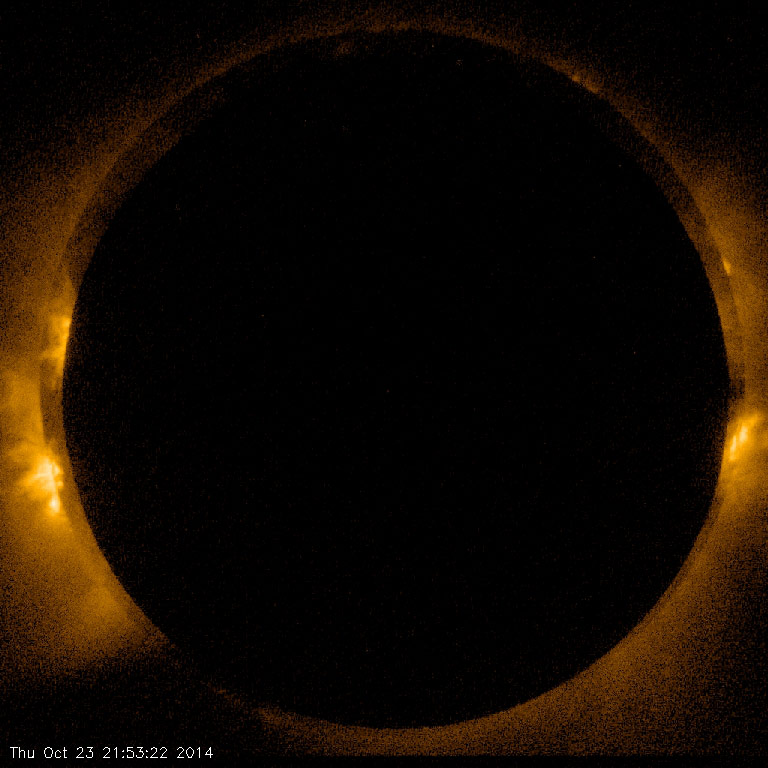
On October 23rd, while North America was witnessing a partial eclipse of the sun, the Hinode spacecraft observed a “ring of fire” or annular eclipse from its location hundreds of miles above the North Pole. This image was taken by the X-ray Telescope. Credit: NASA/Hinode
The Hinode satellite was able to capture x-ray footage of last week’s solar eclipse.
Cambridge, Massachusetts – The moon passed between the Earth and the sun on Thursday, October 23. While avid stargazers in North America looked up to watch the spectacle, the best vantage point was several hundred miles above the North Pole.
The Hinode spacecraft was in the right place at the right time to catch the solar eclipse. What’s more, because of its vantage point Hinode witnessed a “ring of fire” or annular eclipse.
An annular eclipse occurs when the moon passes directly in front of the sun but doesn’t cover it completely because the moon appears too small. (The apparent size of the moon depends on its distance from Earth or, in this case, the spacecraft.) About one-third of all solar eclipses are annular.
“This is only the second annular eclipse Hinode has witnessed since it launched in 2006,” says astrophysicist Patrick McCauley of the Harvard-Smithsonian Center for Astrophysics.
The XRT was developed and built by the Smithsonian Astrophysical Observatory and the Japan Aerospace Exploration Agency. Hinode’s X-ray Telescope is the highest resolution solar X-ray telescope ever flown.
The XRT collects X-rays emitted from the sun’s corona – the hot, tenuous outer layer that extends from the sun’s visible surface into the inner solar system. Gas in the solar corona reaches temperatures of millions of degrees. The energy source that heats the corona is a puzzle. The sun’s surface is only 10,000 degrees Fahrenheit (5,500 degrees Celsius), while the corona is more than 100 times hotter.
“We are very interested in studying solar flares,” adds McCauley. “Flares are most dramatic in X-rays and we’re using the X-ray Telescope to better understand the physical mechanisms that drive flares so that they might someday be forecasted.”
A question-and-answer with McCauley is available on the Smithsonian Science website.
Headquartered in Cambridge, Massachusetts, the Harvard-Smithsonian Center for Astrophysics (CfA) is a joint collaboration between the Smithsonian Astrophysical Observatory and the Harvard College Observatory. CfA scientists, organized into six research divisions, study the origin, evolution, and ultimate fate of the universe.









magnetic field distortion viewed inside-alto-picture of moon-surface, due to change in vector-field-shift of poles
viewed-from pure logic, within ape-primate-human-quantum, emergent-mind
MISSING-LINK!!! the yeti has big-footed it bye-bye 4D OR NOT 4D….2B!!!